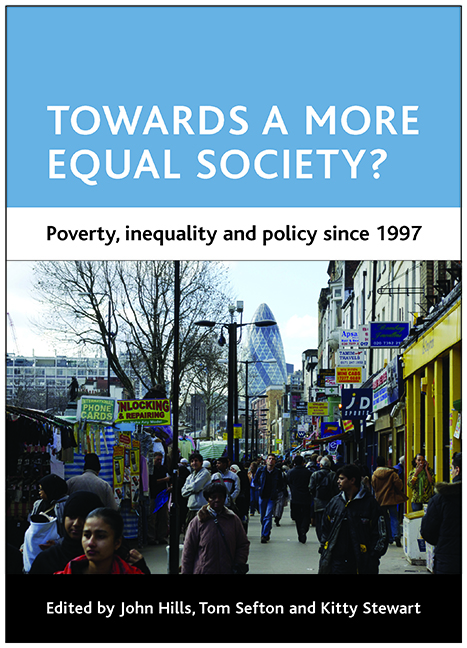seven - Health inequalities: a persistent problem
Published online by Cambridge University Press: 22 January 2022
Summary
Introduction
The first New Labour government came to power in the same year in which a major report on health inequalities was published (Drever and Whitehead, 1997), following the Black Report and The Health Divide (both in Townsend et al, 1992), respectively, 20 and 10 years before. The evidence collated in the three reports consistently showed that while most indicators of health and longevity were on long-term trends of improvement, inequalities between socioeconomic groups and between areas in many such indicators had been increasing since the 1950s. Gaps in life expectancy at birth, as well as in infant and child mortality, between the most and the least disadvantaged in society, had been widening over time. Differences in life expectancy between the top and the bottom social classes were 4.8 years in women and 5.4 years in men in the early 1970s, and were 6.3 and 9.4 years, respectively, 20 years later. Gaps in premature mortality (before age 65) similarly increased, with rates dropping by 44% over two decades in the highest social classes, but only by about 10% among unskilled manual workers, with particularly large inequalities in deaths from respiratory diseases and in smoking rates.
The theme of health inequalities did not feature in the Labour manifesto for the 1997 General Election. However, it soon became one of the top priorities once the new government came to power. Only a few months into its first term, the government established an independent inquiry into health inequalities, under the leadership of Donald Acheson. The final report presented the following year (DH, 1998a) confirmed once again the virtually ubiquitous nature of health inequalities in Britain and presented a number of policy recommendations emphasising the need for cross-government policies, for a lifecourse approach and for policies to address poverty and social exclusion. But even before the publication of the Acheson report, the government began to address the health inequalities problem in a sequence of major policy documents. It started with the Green Paper Our Healthier Nation: A Contract for Health (DH, 1998b), followed in 1999 by the White Paper Saving Lives: Our Healthier Nation (DH, 1999a), which was published with a joint document entitled Reducing Health Inequalities: An Action Report (1999b) that set out planned inputs for a strategy to tackle inequalities.
- Type
- Chapter
- Information
- Towards a More Equal Society?Poverty, Inequality and Policy since 1997, pp. 135 - 156Publisher: Bristol University PressPrint publication year: 2009
- 1
- Cited by



